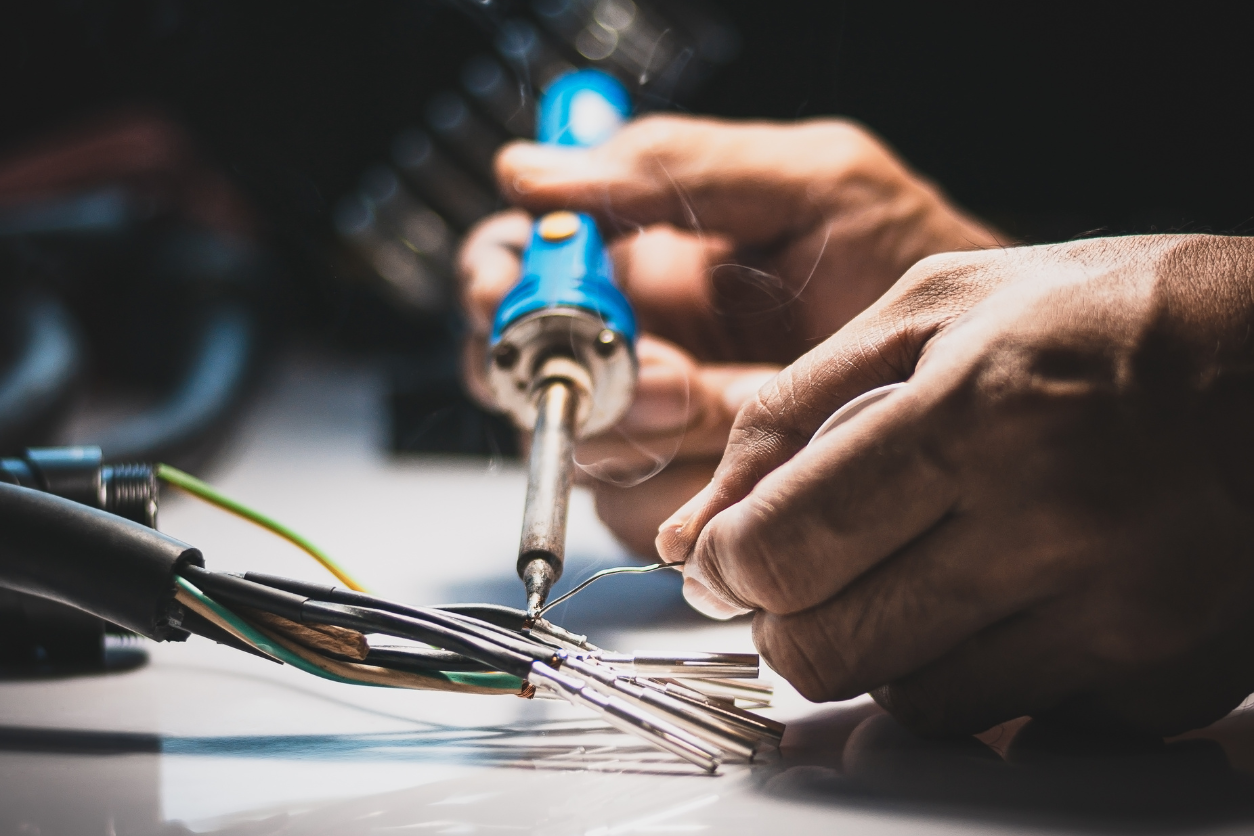How to Use a Soldering Iron: A DIY Beginner’s Guide

Soldering is a skill that can be incredibly useful for anyone who does a lot of DIY. It’s a skill that you can use to repair electronics, jewelry, and many other items around the house. In this post, we’ll provide a beginner’s guide to soldering, including what a soldering iron is, how to use it safely and properly, and some tips and tricks for getting perfect joints every time.
Whether you’re a novice to soldering or an experienced hobbyist, this guide has something for everyone. So, let’s get started and look at all the basics you’ll need to know before you start soldering.
What Is Soldering?
Soldering is connecting two or more metals together using an alloy called solder. The process involves applying heat to the joint area and melting the solder, which then bonds the metals together. As its name implies, the heat source for this process is a soldering iron. Soldering irons are available in many forms, ranging from simple plug-in style models to more complex soldering stations.
Safety Considerations
Soldering involves the use of high temperatures and molten metal, so it is important to practice safe soldering techniques at all times. Make sure that your work area is kept free of combustible materials such as oil cloths or paper towels. Ensure you wear appropriate safety gear, such as eye protection and gloves. Also, make sure that you have a solder smoke absorber nearby so that any fumes from the solder are not hazardous to your health.
Preparing the Work Area
Before beginning any soldering project, it is important to prepare your work area properly. Make sure that all surfaces are free of debris and dust. Use a soldering mat or board to protect your work surface from heat damage if possible. Ensure you have all the necessary tools ready: soldering iron, solder wire, flux paste (if required), and any additional materials needed for the project at hand. You should also ensure that you have plenty of lighting available so that you can see what you are doing at all times.
Soldering Process
Now that you have prepared your work area and gathered all of the necessary materials, it is time to begin soldering! First, plug in your soldering iron and set it to the desired temperature; too high and you risk damaging components and too low may not produce a good bond between metals. Once heated up, apply some flux paste to the joint area and allow it to dry before continuing. Next, take some solder wire and touch it with the tip of your soldering iron; this should cause some solder smoke that needs to be absorbed by your solder smoke absorber. Once you have applied enough molten solder to form a proper bond between metals, remove the heat source and allow the joint to cool down completely before handling it.
Troubleshooting Common Problems
If there are any problems while soldering, you should address them quickly to resolve them without further damage or delay in your project’s progress. One common problem is cold joints; these occur when insufficient heat is applied during the soldering process and results in an improper bond between metals. To address this issue, simply reapply heat until molten solder forms over both metal surfaces until they are properly connected. Another common problem is overheating components; this can be avoided by always considering component ratings when setting temperatures on your soldering iron. Finally, if joints seem too weak or brittle after cooling down, this could result from inadequate flux paste application; in this case, simply repeat the application process while adding a bit more paste than usual before continuing with your project.
Advanced Soldering Techniques
Once you have mastered basic soldering techniques, you can explore several advanced methods if desired. These techniques could include working with different types of material, such as through-hole components or surface mount devices, hot bar soldering, multi-component assemblies, reflow soldering, and even robotic or automated assembly processes used in large-scale industrial projects. Each technique requires its own tools and skills, so research before attempting advanced techniques!
Soldering is a valuable skill for any DIY enthusiast, and using a soldering iron is a great way to get started. This beginner’s guide to soldering provides the basics of soldering, safety considerations, and tips and tricks for getting perfect joints each time. With diligent practice and the proper precautions, you’ll be a soldering pro in no time!